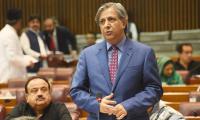ISLAMABAD: Civil servants in Pakistan are not at a salary disadvantage when compared to their counterparts in the private sector. And the total cost of a Grade 21 officer is estimated to be 12pc higher than a UN national officer, unfolds the in-depth study on Civil Service Compensation: Incentives, Dissatisfaction and Costs done by (Pakistan Institute of Development Economics) PIDE.
The civil servants also enjoy in kind benefits of worth billions of rupees like housing, official cars, job security and medical allowances. The public-owned houses have a minimum market value of Rs 1.45 trillion and can generate an annual rental income of Rs 10.75 billion.
And monetization notwithstanding, the cost of using an official car exceeds the basic salary of employees in BPS 20-22. Job security has an added value of 0.5pc to 17pc on the compensation. Apart from the medical allowance, approximately Rs 2.3 billion monthly are incurred on civil servants’ medical bills. Such perks are an inefficient form of compensation as they are not linked to performance and efficiency. The World Bureaucracy Indicators of the World Bank estimates that the public sector wages in Pakistan are 53pc higher when compared to the private-sector wages
Authored by Vice Chancellor of PIDE Dr Nadeemul Haque, Omar Siddique and Naseem Faraz, the study looks into some key issues within the civil services that include: cash payments, non-cash rewards, inequality in the distribution of perks, waste of precious land for housing, pay and performance disconnect, a bias between cadre and non-cadre officials, and marginalised specialized groups.
In the absence of private-sector salaries’ data, PIDE used the Labour Force Survey 2017-18 data and the pay structure used for the local hiring by the UN for comparison. The UN local recruitments are done on a market survey of the salaries. And under that yardstick, the total cost of a Grade 21 officer is estimated to be 12pc higher than a UN national officer. It also pinpoints saying that non-monetary benefits are much higher in the public sector than in the private sector, with 80pc of the private sector workers having no non-monetary benefits.
In contrast, almost 80% of public sector employees have more than three non-salary benefits. Except for an MPhil/PhD degree, there is a wage premium in the public sector at all education levels. The study also identifies the fact that the public sector pension system as rather generous. The pension is calculated as 70% of the last drawn basic salary at the time of retirement, if the raises granted by successive governments are included, it raises the pension to 122%-140% of their last drawn basic salary in some cases. And on average, a person who serves in the government for 25 years or more draws a pension until they turn 80. And after their death, at least 13 heirs can claim family pension.
In the private sector, only those employees receive after-retirement benefits who work in the formal sector. The informal sector employees do not have any such system for their security in old age. Moreover, the blue-collar workers in the formal private sector only get meager social security payments after retirement.
The study suggests reforms by adequately compensating all civil servants so that their welfare is not compromised. The salaries of the civil servants must be at par with the comparable private sector salaries. The annual adjustment in the salaries must be based on an annual survey, performance-based, with only those should get a raise who cross a predetermined efficiency bar.
The monetization of all the perks should be a priority as it would reduce the disparities within the structure. The government housing must be monetized sequentially by grades starting from grade 19-22 employees. The government housing assets have a market value of approximately Rs 1.45 trillion. The government can receive this value after releasing the government housing assets in Islamabad to the private sector boosting the construction industry.
The investment can be made through public-private partnership for commercial activities, social infrastructure (libraries, recreation, community spaces) and low-cost housing. The reform can increase the accommodation capacity of the land by more than ten times.
Similarly, the use of official cars by top civil servants must be abolished, and they should be given cars on leasing arrangements. It would ensure that the officials will have a fully maintained car from the very first day of the contract. The advantage of this model is that the bank would monitor the asset. Based on an inventory, some of the freed-up official vehicles would be auctioned off, and rest would be put in a shared pool. Officials can use these common pool vehicles for only a fixed number of times per month. After they have used up their vouchers, the private use of official vehicles would be charged as per the existing government rules.
In this image labourer laying a sewerage line in Peshawar. — Facebook/Peshawar Development Authority/FileJHANG: The...
Members of Berozgar Naujawan Tehreek hold a protest against unemployment in Peshawar on April 22, 2024. —...
Participant speaks three-day national level mega event “Youth Robotec’24,” organized by the National Center of...
This representational image shows polythene bags. — Unsplash/FileMULTAN: Polythene bags have disastrous effects on...
A representational image showing ambulances parked at an incident site. — Facebook/Rescue 1122...
A sign of the World Health Organization at their headquarters in Geneva. — AFP/FilePESHAWAR: The representative of...







